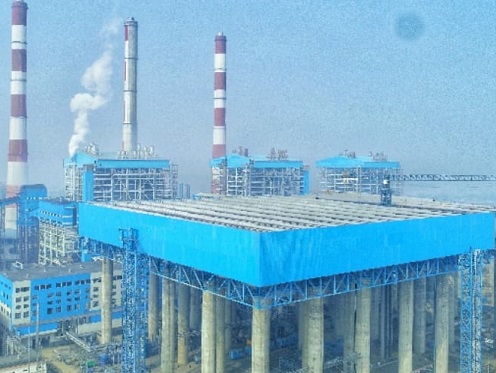1-Mar-2023: NTPC commissions India’s first Air cooled condenser
NTPC has commissioned India’s first Air cooled condenser installed Super Critical plant to demonstrate its Commitment towards water conservation through reduce, reuse and recycle.
NTPC, the country’s largest integrated energy utility, has started commercial operation of 1st Unit of 660 MW at North Karanpura (3*660 MW), in Jharkhand on 01st March-2023. This project has been envisaged with Air Cooled Condenser (ACC) which has almost 1/3rd water footprint as compared to a conventional Water Cooled Condenser (WCC). This would result in water saving of around 30.5 mcm annually thus fulfilling the needs of around 1.5 million people in the region annually.
What is Air Cooled Condenser (ACC)?
An Air Cooled Condenser (ACC) is a type of heat exchanger used in power plants and other industrial applications to cool and condense steam from a power cycle or other process. Unlike a water-cooled condenser, which uses water as the cooling medium, an ACC uses air to remove heat from the steam and condense it back into water.
An ACC consists of a series of finned tubes arranged in a grid pattern, with fans mounted above the tubes to force air through them. The steam from the power cycle enters the tubes and condenses on the surface of the tubes, releasing heat to the surrounding air. The resulting water then falls to the bottom of the tubes and is collected in a basin for reuse in the power cycle.
ACCs are often used in areas where water is scarce or where environmental regulations restrict the use of water as a cooling medium. They are also used in power plants with a dry cooling system, which uses air instead of water for cooling, to increase the efficiency of the plant. However, ACCs are generally less efficient than water-cooled condensers, and require a larger footprint to achieve the same cooling capacity.


